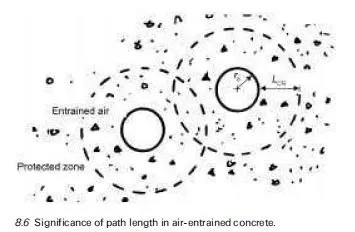Alkali-aggregate reaction (AAR) is a reaction between the alkali hydroxides present in the pore solution of concrete and certain constituents of some aggregates; under certain conditions the reaction may produce deleterious expansion and cracking of the concrete. There are two distinct types of alkali-aggregate reaction in concrete; these are (i) alkali-silica reaction (ASR), which involves the reaction of certain silica minerals within the aggregate, and (ii) alkali- carbonate reaction (ACR), which involves the reaction of carbonate minerals.
Problems due to ASR were first identified in the State of California in the 1930s and reported by Thomas Stanton of the California State Division of Highways in 1940 (Stanton, 1940). Since this time ASR has been identified in many countries throughout the world and the problem is one of the major causes of premature concrete deterioration. There has been much research in this area and there are now established procedures for identifying potentially reactive aggregates and preventing deleterious expansion when such aggregates are used. There are also a number of techniques for managing ASR-affected structures. These issues together with the mechanisms of the reaction are discussed in this chapter.
Alkali carbonate reaction (ACR) was first discovered by Swenson (1957) as the cause of concrete deterioration in Canada and was subsequently implicated in cases of degradation of concrete structures in the USA (Hadley, 1961). Unlike ASR, problems with ACR are restricted to a few isolated locations worldwide. Consequently, there has been comparatively little research conducted on this topic. Although there are established protocols for identifying alkali-carbonate reactive aggregates there are no recognized measures for controlling the reaction beyond avoiding the use of the reactive material in concrete. Discussion of ACR in this chapter will be restricted to a summary of the reaction mechanisms.


